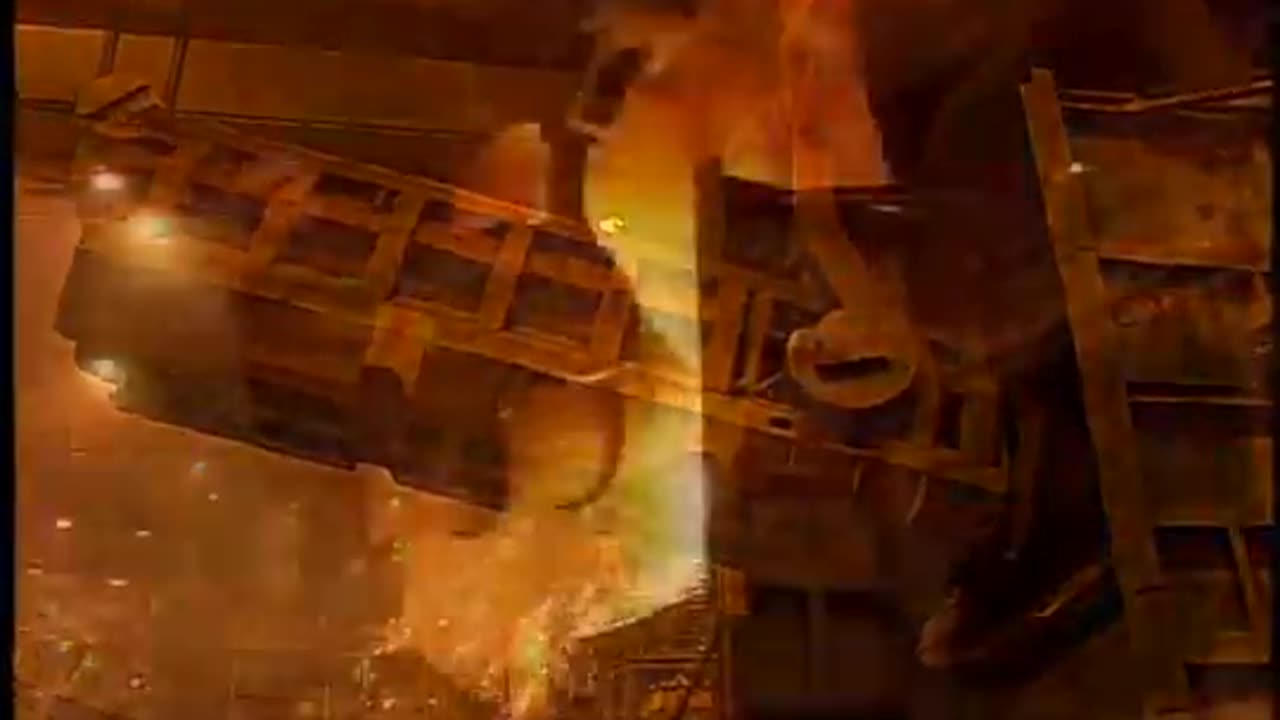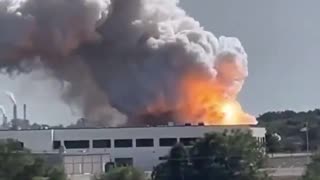Premium Only Content

The Steel Making Process From Start to Finish - Material Science
The Steel Making Process From Start to Finish
Steel is an alloy of iron and carbon with improved strength and fracture resistance compared to other forms of iron. Because of its high tensile strength and low cost, steel is one of the most commonly manufactured materials in the world. Steel is used in buildings, as concrete reinforcing rods, in bridges, infrastructure, tools, ships, trains, cars, bicycles, machines, electrical appliances, furniture, and weapons.
Iron is always the main element in steel, but many other elements may be present or added. Stainless steels, which are resistant to corrosion and oxidation, typically need an additional 11% chromium.
Steel is primarily produced using one of two methods: Blast Furnace or Electric Arc Furnace.
The blast furnace is the first step in producing steel from iron oxides. The first blast furnaces appeared in the 14th century and produced one ton per day. Even though equipment is improved and higher production rates can be achieved, the processes inside the blast furnace remain the same. The blast furnace uses coke, iron ore and limestone to produce pig iron.
Coal traditionally has been a key part of the coke-making process. The coal is crushed and ground into a powder and then charged into an oven where it is heated to approximately 1800°F in the absence of oxygen. As the oven is heated, the coal begins to melt so most of the volatile matter such as oil, tar, hydrogen, nitrogen and sulfur are removed. The cooked coal, called coke, is removed from the oven after 18 to 24 hours of reaction time. The coke is cooled and screened into pieces ranging from one inch to four inches. The coke is a porous, hard black rock of concentrated carbon (contains 90 to 93 percent carbon), which has some ash and sulfur but compared to raw coal is very strong. The strong pieces of coke with a high energy value provide permeability, heat and gases which are required to reduce and melt the iron ore, pellets and sinter. Today, natural gas is increasingly being added in place of coke to the same degree in the blast furnace to reduce carbon emissions
-
 0:14
0:14
Rumblestuff
2 days agoNewburgh, Indiana: Shelter-in-place order issued due to chemical fire
160 -
 LIVE
LIVE
TheCrucible
55 minutes agoThe Extravaganza! EP: 33 (9/08/25)
10,250 watching -
 LIVE
LIVE
Kim Iversen
2 hours agoDepartment Of War is BACK: JD Vance Says "I Don't Give A Sh*t"
2,019 watching -
 1:44:19
1:44:19
Redacted News
1 hour agoHIGH ALERT! BRICS CALLS EMERGENCY MEETING IN BRAZIL, TRUMP THREATENS TO DESTROY RUSSIAN ECONOMY
51.9K45 -
 LIVE
LIVE
Candace Show Podcast
1 hour agoBecoming Brigitte: MK Ultra And The French Gold Rush.
4,173 watching -
 DVR
DVR
Stephen Gardner
1 hour ago🔥FINALLY! Trumps ORDER TODAY has Democrats PANICKED!
9.36K2 -
 30:38
30:38
Kimberly Guilfoyle
3 hours agoBreaking News Coverage, Live with Former DEA Administrator Derek Maltz & Tony Kinnett | Ep252
4.55K4 -
 48:17
48:17
Mark Kaye
5 hours ago🔴 What Trump Said About Prayer in Schools SHOCKED Everyone!!
32.3K10 -
 LIVE
LIVE
LFA TV
19 hours agoLFA TV ALL DAY STREAM - MONDAY 9/8/25
1,384 watching -
 1:10:49
1:10:49
vivafrei
3 hours agoCNN Finallly Reports on Stabbing! GoFundMe Scam or Psy-Op? Trump E.J. Carroll Ruling & MORE
80K69